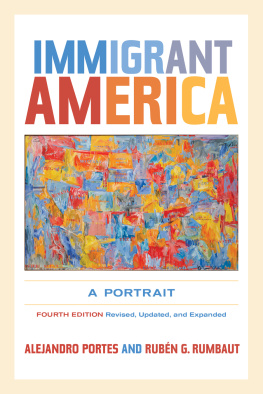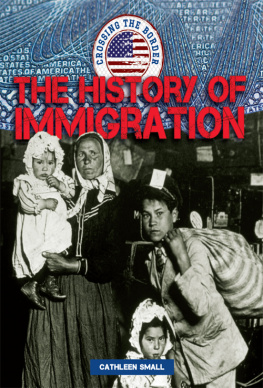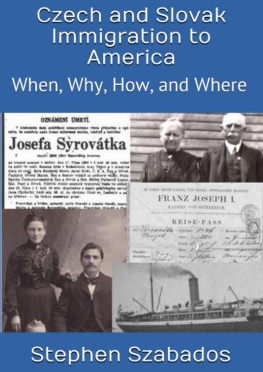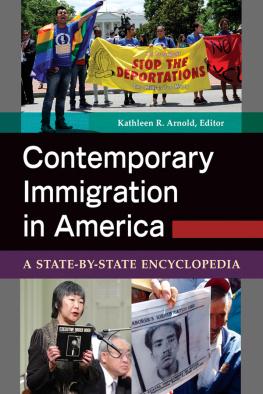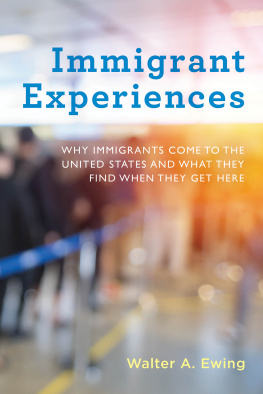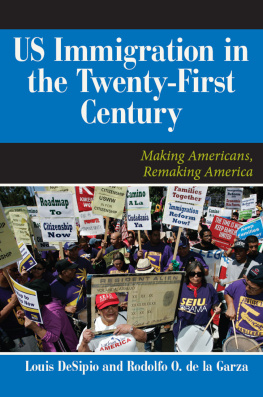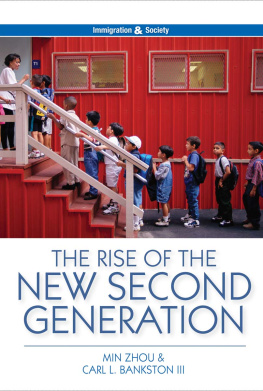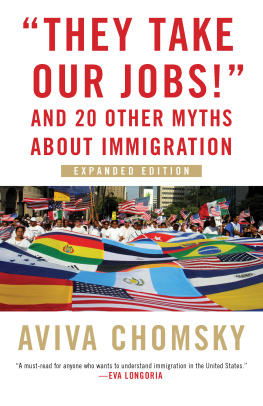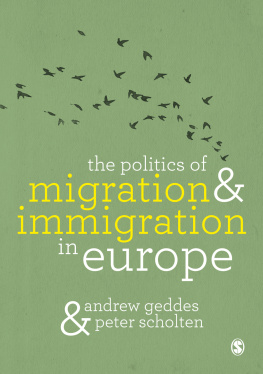Preface to the Fourth Edition
This book, a study of the odysseys of millions of newcomers from all over the world to the United States, has itself been an odyssey. We began work on the first edition of Immigrant America, our portrait of a rapidly evolving and permanently unfinished reality, in the 1980s. Over the ensuing decades each new edition of this bookas summed up in its prefaces of 1990, 1996, and 2006has sought to depict and explain major changes in the size, composition, and forms of U.S.-bound international migration flows; the immigrants patterns of settlement and modes of incorporation in the American economy, polity, and culture; and the societal reaction to these newcomers and their children. Each edition has seen the introduction of entirely new chapterson the second generation, religion, immigration policiesand the revision, expansion, and thorough updating of all others, the book itself changing to reflect a world on the move.
This fourth edition is no exception, although in two respectsthe addition of the opening chapters on history and theoryit differs notably from its predecessors. We seek in these new chapters to fill a vacuum noted in the course of teaching the book at the undergraduate and graduate levels. Rather than beginning with vignettes and a typology of contemporary immigrants to illustrate the diversity of their class and national origins and their contexts of exit and reception, we start with an analysis of three distinct phases spanning the last 134 years: (1) the Great European Waves of the period from 1880 to 1930, which accompanied the American industrial revolution and reached a historic zenith in 1910, when 14.7 percent of the total population was foreign-born, and ended with the triumph of restrictionist legislation; (2) a period of retrenchment from 1930 to 1970, which spanned the Great Depression, World War II, and its aftermath, reaching a historic nadir in 1970, when only 4.7 percent of the population was foreign-born; and (3) a period of rebound from 1970 to the present, which remains the focus of the bookan era of economic restructuring, widening economic inequality, and the sharply increased migration of low-wage laborers, professionals, entrepreneurs, refugees, and asylees, combining to reach a foreign-born total of forty million by 2010. Migration during this new era grew by more than a million a year, ending with the Great Recession and unprecedented state persecution of millions of undocumented immigrants. This state policy included the creation of a vast network of immigrant detention centers and historic deportation levels, even as unauthorized migration decreased to net zero. One leitmotif of the book is the counterpoint between the widespread demand for immigrant labor by different sectors of the American economy and the activities of nativists and xenophobes across the three successive phases of U.S.-bound immigration. Indeed, throughout successive chapters we look to the historical record to place present concerns in a broader comparative context. History does not repeat itself, but it does echo.
The second chapter adds a needed theoretical anchor for the rest of the book. To be sure, there is no comprehensive theory of international migration, but we systematically review a wide range of theories organized into four major categories: (1) those that seek to explain the determinants of the origins of migration, (2) those that examine its continuation and directionality, (3) those that address the problematics of migrant labor, and (4) those that focus on the patterns of migrant settlement and adaptation. We aim to show how these theoretical considerations, from classic studies to competing contemporary emphases, apply to the condition of different immigrant minorities and their descendantsand we incorporate them in subsequent chapters as we examine their patterns of settlement (and the emergence of new destinations), economic and political adaptation, resilient and emergent ethnicities, language and religion, transnationalism and assimilation, and intra- and intergenerational change.
Our final chapter aims to lay out the basis for a sound understanding of the origins of contemporary immigration and for viable policies regarding it. Here we dissect the disconnect between the public perception of immigration, as reflected at the surface level of policy debates and shifting currents of public opinion, and the underlying realities rooted in the political economy of the nation and in the historical linkages between the United States and immigrants countries of origin. Two prevailing ideologies toward immigrants that resonate with the general populationto exclude them or assimilate themseldom succeed in their intended goals, leading instead to a host of policy contradictions and resulting in tensions and unintended consequences. The social sciences have not been very good at predicting specific major eventsthe literature is littered with failed grand predictionsbut we can anticipate with reasonable confidence other phenomena, steady states, and trends, which we spell out in some detail. The importance of alternative outcomes will largely determine the extent to which the nation will be able to maintain its economic viability and political leadership in a changing global system.
As long-term participant observers of immigration, we have seen changes cascade, not trickle, in each of the preceding decades. But while immigrant America continues to change, as does the world that spawns it, the goal that originally inspired this book, and the fruitful collaboration that has now spanned three decades, remains the same, and evergreen: to grasp the diversity and underlying structures of a new age of migration, to make reasoned sense of complex and controversial issues, and to make our living portrait of immigrant America accessible to both the specialist and a general public eager to cut through stereotype and clich to learn about the newest members of American society.

